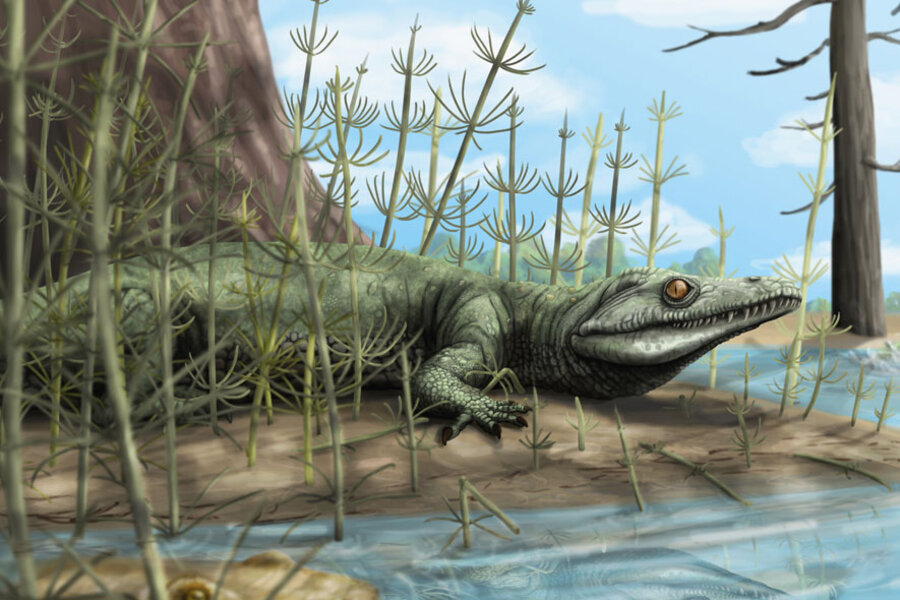Have scientists found a missing link in dinosaur evolution?
Loading...
Paleontologists in Brazil have discovered a new fossilized 250-million-year-old reptile that could represent a long-sought missing link between primitive reptiles and the precursors to modern birds and crocodiles.
The reptile is a representative of a new species that scientists have named Teyujagua, or Guarani for “fierce lizard,” the researchers report in a paper published Friday in the open-access journal Scientific Reports.
Teyujagua paradoxa probably looked a bit like a modern crocodile, with nostrils placed on the top of a long snout. It likely grew to about 5 feet long, and lived in wet areas, eating small lizards and other animals. Teyujagua's name references a mythological creature with the body of a lizard and the head of a dog.
According to scientists, Teyujagua’s discovery answers longstanding questions about the evolution of large reptiles. The ancient lizard appears to have been a link between primitive reptiles and more modern looking reptiles called archosauriforms, which eventually evolved into such diverse creatures as dinosaurs, birds, and crocodiles.
“Archosauriforms are spectacularly diverse and include everything from hummingbirds and crocodiles to giant dinosaurs like Tyrannosaurus rex and Brachiosaurus,” Richard Butler of the University of Birmingham explained in a press release. “Teyujagua fills an evolutionary gap between archosauriforms and more primitive reptiles and helps us understand how the archosauriform skull first evolved.”
The fossil that helped solve this mystery was discovered in early 2015 by a team from the Paleobiology Laboratory of the The Federal University of Pampa (Unipampa) in Bagé, Brazil. Eventually, researchers from three Brazilian universities and the University of Birmingham collaborated on the project.
Teyujagua likely lived right after a mass extinction that occurred 252 million years ago and wiped out about 90 percent of the existing animal species in the world. The mass die-off was likely triggered by a humongous volcanic eruptions in eastern Russia that ushered in a period of significant ecosystem reconstruction. As ecosystems developed, so did animal species.
In the wake of the extinction, archosauriforms flourished and became dominant.
Because Teyujagua occupies such an important position in the evolutionary chain, researchers were thrilled by the discovery of the fossilized skull that provided the basis for Friday's article.
“Ever since we saw that beautiful skull for the first time in the field, still mostly covered by rock, we knew we had something extraordinary in our hands,” Unipampa professor Felipe Pinheiro said in a statement. “It had a combination of features never seen before, indicating the unique position of Teyujagua in the evolutionary tree of an important group of vertebrates.”






